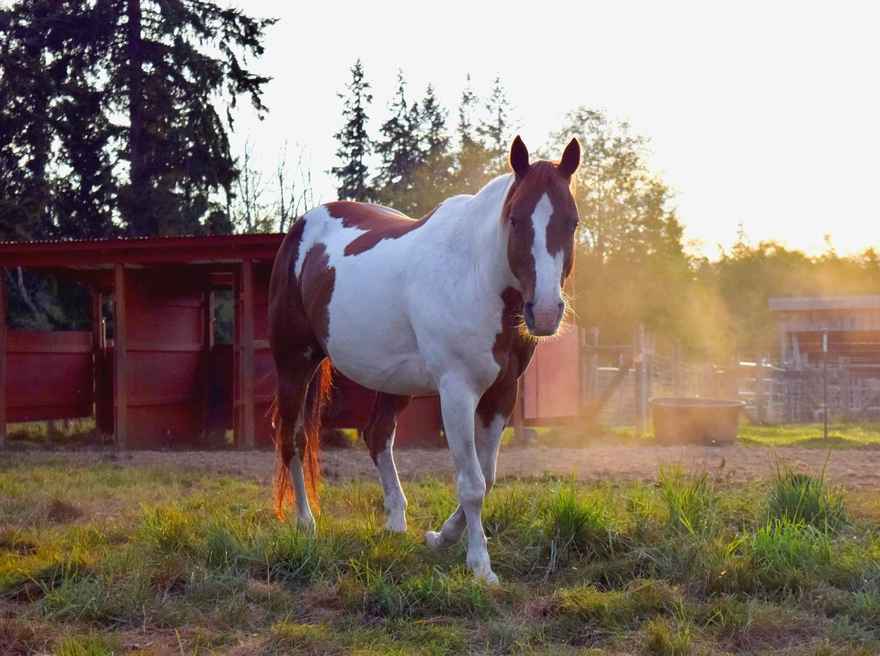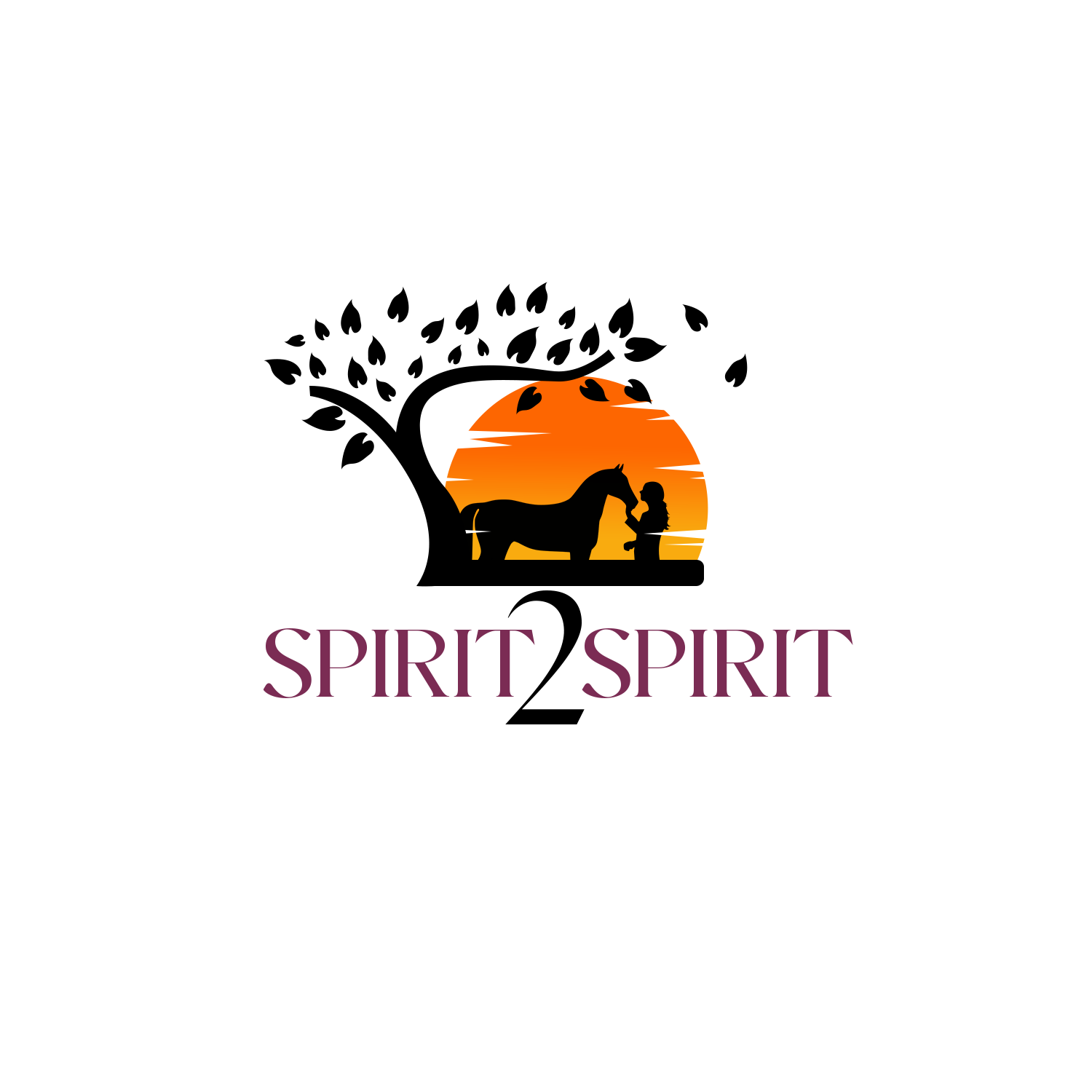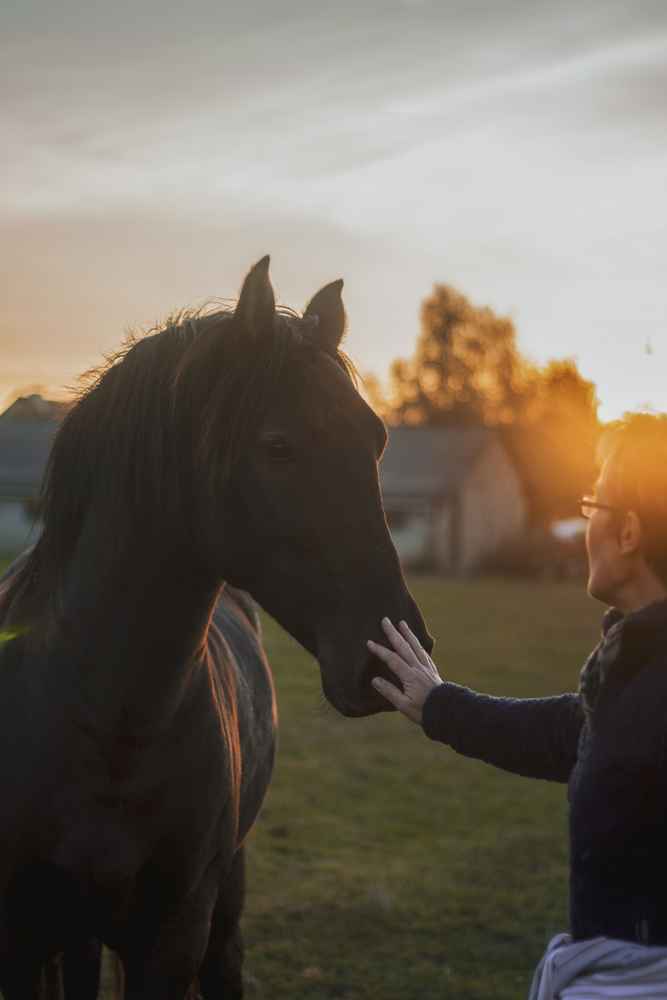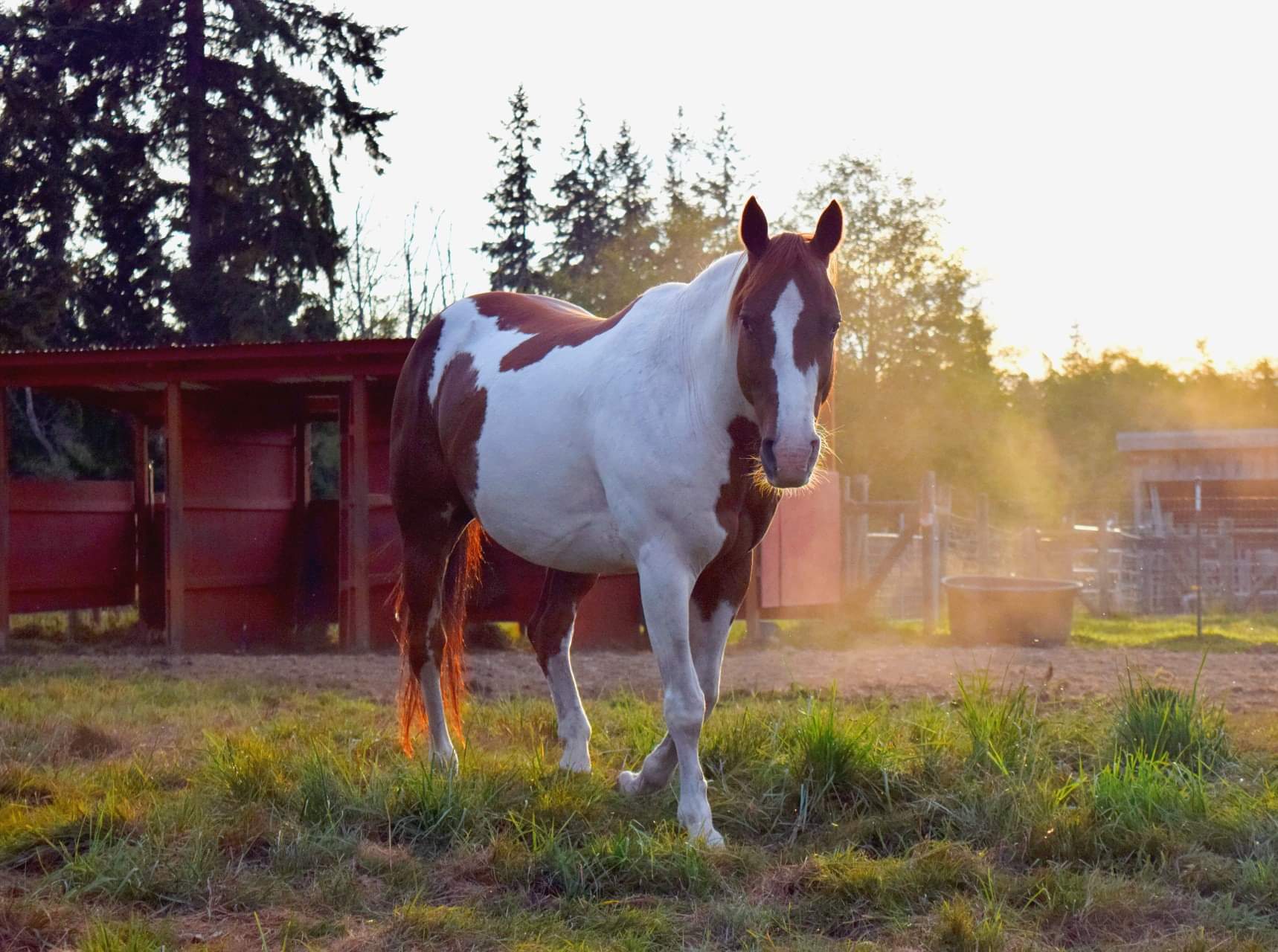First, Forgive Yourself

“At some point in our career we had that light bulb moment. Be that light bulb for someone else”
Forward:
I should open with a word of caution: this blog is not my typical content, but it is very real and vulnerable for me. In fact, I am still raw from my experience at the Emotional Horsemanship clinic put on by Lockie Phillips (emotionalhorsemanship.com), and no it’s not from too many hours in the saddle! (ok, so my jokes are still in here….). There may be some triggering content as it was a triggering experience for me as well, so please, proceed with an open heart and a centered mind.
In good health,
Sonia
Emotional Horsemanship Clinic in Gig Harbor, WA:
I am one who frequently “looks for the edges” of things. I like to explore new ways of thinking and doing. I am all about shifting the paradigm and embodying the motto of “when we know better we do better”. With that said, I also try to show compassion for those who do not know better, who cannot do better, and who are stuck in the patterns of their environment and culture. “You don’t know what you don’t know” precedes the prior quote in my book.
In the horse industry, as well as in the field of executive leadership, I see parallels with regard to dominance and control. There are those of us who are “at the edges” working to shift this paradigm for many years, however, there it is, still chugging away like the old ford pickup that just won’t die, but can’t shift into second gear to save it’s life. Many of us were born and bred in the “just do it” and “suck it up” culture. Work harder, perform better, show up how I want you to act, not how you need to feel.
Most horses have been born into an environment that is not of their choosing and is a far cry from what they are biologically wired to exist within. When this happens, they must learn to adapt. They must develop a new skill set and language. They must adopt a new culture. Many horses make this adjustment very well and live happily alongside their human companions quite comfortably. However, the prevailing propensity (say that ten times fast!) is towards a life of accommodation instead of partnership. These horses are “shut down”. They must go along to get along and avoid punishment or harsh treatment. They must find a way and protect themselves. Like children of abuse, they often guard their bodies by masking pain and rarely show their feelings. They faun or shut down. They are the perfect push-button horse, doing anything and everything we ask of them, and never having a bad day. The challenge is in seeing the difference between a good performance and a good partnership. I find this to be true with horses, as well as with burnt-out and shut-down teams.
At a clinic I attended the past two days which was put on by Lockie Phillips of Emotional Horsemanship (emotionalhorsemanship.com), there were quite a few themes that came up. One of those was the idea of a “Hyper-Independent Trauma Response”. Horses who have felt let down by others, who have to find their own way and create their own comfort. They don’t feel safe in connection and vulnerability. They can exhibit behaviors where they are vigilant, slow to trust the process, and cannot always rest with a human. On the other side of this is the shut down horse, who, through similar stimulus, shuts down instead of moving to a hyper-arousal state, they move to a hypo-arousal state. They go numb. They hide and protect themselves by not showing weakness or emotion.
When these horses are finally given safety, connection, and a platform to express themselves, chaos almost inevitably follows. From shut down to a raw nerve, these horses must go through this process. What do we do in these situations? Treat them like a close friend who is going through a lot. Sit with them, ask them what they need, be there to witness for them. Don’t add complications to a chaotic mind by fussing, restraining, etc. Stop, be still. June Gunter of TeachingHorse LLC (teachinghorse.com) is frequently heard saying: “Don’t throw energy at confusion.” Their mind is going way faster than it should, and their body has no other option but to follow suit.
Lockie talked about how resiliency starts with deep attachments first. They must have “embodied security” which comes from secure relationships. When this occurs, many of the behaviors associated with this hyper-arousal state of chaos just fall away naturally.
Often, when we are attempting to help these horses, we can move to a space of not wanting to ask ANYTHING of them. They’re allowed to say “no” 100% of the time, which, when finally given the option of “no”, they often choose more than “yes” in these early stages. When this happens, we are often at a loss as to how to find the “yes” response as our prior conditioning has taught us the only way to get a response is through pressure, escalation, or dominance and restraint. He focused quite a bit on establishing RAPPORT not DOMINANCE. In healthy relationships, such as with a parent and child, there are times when we need that “yes” response (going to the dentist perhaps or getting your flu shot). However, we have to resist the urge to escalate pressure, and instead offer the yes….over and over. Give them the space to consider the options. Be clear and consistent. Be innovative when needed. Praise the “yes” but don’t punish the “no”. Horses are often seeking the relaxation that comes from connection and will find the yes eventually. We must be patient.
On the second day, Lockie led everyone through an exercise to help us somatically embody the experience a horse has when they have pain and are asked to “move out correctly”. This is the “slow and lazy” horse in many situations. The horse we give injections and medications to so they can continue to sail over jumps, the horse we “pinfire” (burning the lower limbs to ‘improve’ healing) so they can continue to run, the horse we Bute (pain medication for horses) before and after every trail ride. We were asked to put rocks in our boots while another participant had our leg hobbled and led us around the arena performing basic maneuvers. Before you send Lockie hate mail, please hear me out! Our first round was meant to embody how we have traditionally pushed these horses beyond their physical capabilities. We have taken away their “no” and used dominance to force the yes. The second round was all about how we can partner with them and establish a rapport, where we can help them move their bodies in a way that supports their injury, meets their needs for health and wellbeing, and helps them continue to participate at the level they are capable of. Think of anytime you or someone you know injured a limb. You were often sent to physical therapy after the injury healed where you learned how to either compensate for a chronic issue or return to prior function with a fully healed injury. It was much in this fashion that we were asked to proceed with horses who have sustained injuries.
The counter to this approach is where we ask them to push through the pain, suck it up and just get on with it. We aren’t giving them any accommodation in their day-to-day lives, and we do not adjust to allow for a change in physical capabilities.
This, my friends, was where I was heavily triggered. Surrounded by strangers (supportive and lovely humans, but still…for someone such as me with “hyper-independent trauma response” of my own…) I started to cry and had to leave the arena. Let me take you back a bit to create context.
Some Historical Context:
When I was in the Navy, I sustained injuries to both legs that caused excruciating pain. I was in the military when the “suck it up” culture was part of the fabric, and I was also given many examples of why you would never show weakness or express discomfort. I also was told on numerous occasions “we can’t have broken corpsman, if you’re broken you’ll go out undesignated.” Who would jump up and admit pain after that insight?! So, I continued to run on broken legs, and at the expense of being a bit mellow-dramatic for the next few moments I’ll tell you in full disclosure, I had to be carried to my room by my fellow shipmates after every PT run. My legs swelled so bad I had “cankles”. When I finally broke down and went in to be seen, I had numerous stress fractures in both feet, stress fractures in both tibias, severe shin splints and the makings of compartment syndrome in both shins. Through extensive re-conditioning, PT, and lord knows everything else that could be thrown at me, it was determined to be permanent damage that was deemed degenerative (will get worse with time) and I was “med boarded” and discharged from the military. Before you send hate mail to the Navy please hold….
Fast-forward to present day and I live with pain in my legs every day. It’s chronic, it is only getting worse, my weight doesn’t help (I’m not ignorant to the effect of obesity), and I do not fully accommodate myself as I am still stuck in that wiring of “suck it up” and I refuse to let it slow me down. I have good days and bad days. I push myself too hard, my feet go numb, my shins are on fire and feel like someone is peeling layers of flesh off bone. It happens.
Before you unpack that too much, just place it to the side for a second. This is my testimony, one small component of a very full and fulfilling life I lead. I do not regret my time in service (what?! You heard me.), and I am not this, or any other diagnosis I carry. I say to my Veterans all the time who come to me and the horses “Your past can inform you, but it does not define you.” I HAVE a disability, I am not my disability.
Now, let’s add a layer. I have a horse, Hank, who came to me “perfect”. He was young, sweet, and accommodating. I purchased him (the only horse I’ve purchased in a very long time to be honest! Most of my herd comes to me as a sanctuary stay situation) to be my trial horse as my herd was aging and slowing down, and I wanted to be able to adjust their lifestyle to fit their needs while still accommodating my need to be in the woods on a horse.
The next two years were a steep learning curve for me in what it is to rehabilitate a shut-down horse. He went from Mr. Perfect to a raw nerve. He was terrified, jumpy, explosive or would freeze. He would visibly shake and curl in on himself. He would anticipate my ask or go way overboard in his delivery in an attempt (I believe) to avoid punishment or conflict. I had to learn how to get softer, how to break things down even more to smaller and smaller steps, I had to let him “make a mistake” and move through it with him without punishment. I had to allow the “no”….A LOT. At some point, I had to start asking for the yes, and we are still working on redefining what it is to be in partnership with humans. He is still timid about trusting us. I have to approach him with tools and aids in very different and creative ways due to the deep-seated trauma he has around the associations they bring. I could write a book on my relationship with Hank and all we have been through, but this is not the place for that. Just know, that he has an injury to his right front pastern that is visible due to external trauma to the right front leg at an early age. This injury did not seem to bother him at all and didn’t inhibit his movement and I thought nothing of it, considered it superficial…until that is, when he was finally given a voice, a choice, and an instrument of communication. Then, as if overnight, he was lame. A pain he had been masking because it wasn’t safe to express it came out. He walks with a chronic limp (yes he is under veterinary care and is properly medicated but not sedated). He retired from service before he even began.
Back To The Clinic:
Now, let’s return to Lockie’s clinic for a moment. As I stood there in the arena while we discussed how horses are pushed through pain, told to suck it up and perform, to mask their injury and silence their voice, my own nervous system took a massive hit. When my partner was handing me the rocks to put in my boot I said “I don’t need those, I already walk with pain. I have to wear these thick compression sleeves on my shins just to be standing here talking to you.” She seemed a bit shocked and didn’t know what to say. I don’t seek sympathy, and I don’t want pity or shame. It is a part of who I am, I accept this, yet, in that moment my story, and Hank’s story, and the story of all the others like me and Hank hit me like a freight train and I had to leave the arena. Lockie told another participant about what she was carrying that it is self-honoring to take it with you. It is part of you, do not put it down, just turn the concrete to liquid. I appreciate that. We carry it with us, and we honor our journey and our story when we acknowledge its presence within us. It doesn’t have to weigh us down, it can shift with us as we shift.
As a side note, it may not surprise you to hear that while I was away for a few days at Lockie’s clinic, Hank’s limp got increasingly worse overnight. I went out to see him late last night while it was barely light enough to see when I arrived home. I was still raw and emotional, and I told him I was sorry. I’m sorry for all the humans before me who hurt him. I’m sorry for all the times I also made mistakes and didn’t listen, and I thanked him for being so forgiving as I bumble my way through finding what is best for him. I didn’t look at his foot last night as it was so dark, but I went out first thing this morning, and he has an abscess in that hoof wall that burst. Make the associations you like, but I feel like he and I both let go of something that was festering inside of us over these last few days.
Ok, now that I’ve poured my heart out telling you my personal experience of the clinic, I want to bring it back around to why I am even sharing all of this detail with you:
The industry needs to change. How will the industry change? Through people. Horses and humans alike deserve better. We can be better to each other. We can lead through partnership and let go of restraint and force. We can establish rapport and not dominance. This is what the horses are trying to teach us, and why they are such beautiful examples of how we as humans can learn to live in our “herds” at work and at home.
We each need to do our part as professionals, leaders, and/or equine stewards to advocate in an industry that (presently) is slow to shift away from traditional methods AND is seeing an increase in requests for immediate gratification that is so rampant in society. How do we remove the hierarchy pyramid we are all so accustomed to? Remember first and foremost to respect each person’s journey and where they are in the process. We don’t know what we don’t know, we do what we are taught, and when we know better we do better. Please extend this grace to everyone around you. I don’t hate the Navy, I don’t hate the people that have hurt horses. I seek to educate, to help inform, to give them a better answer. To open the door to “yes” no matter how many times I get the “no”. Don’t vilify, judge, slander, etc. Instead, give them something new to consider. Remember that many of us were where they are at one time and we learned better, so we do better. No one is perfect. At some point in our career we had that light bulb moment. Be that light bulb for someone else.
How we choose to advocate can vary. I personally choose to "stay below the brace response" and not directly attack their methods. Others feel a direct approach is more effective. Both can exist. Above all else, before anything else, first you must forgive yourself. Forgive yourself for not knowing better, for not doing better, for not being better. A world without the freedom to make mistakes is not safe. Allow yourself to make mistakes! Be gracious and loving with yourself and others. Forgive yourself, then, let it go. “Ride the horse you have today” and let the rest go.
If we are going to impact change, we have to open the reins in the direction we wish to go like opening a door to a new way, through forward momentum. I personally have chosen an approach which ‘stays below the brace response’ by coming alongside people in the industry and gently guiding them, in partnership with horses, towards a different idea to plant the seed, just as the seed was planted for myself not so long ago that caused my shift away from dominance and towards partnership. Others choose to face adversity head-on. Both can exist. It isn’t always black or white, it isn’t “them or us”, it’s “we”. Collectively, we can do better and be better, for ourselves and for our herds of humans and horses alike.





0 comments
Leave a comment
Please log in or register to post a comment